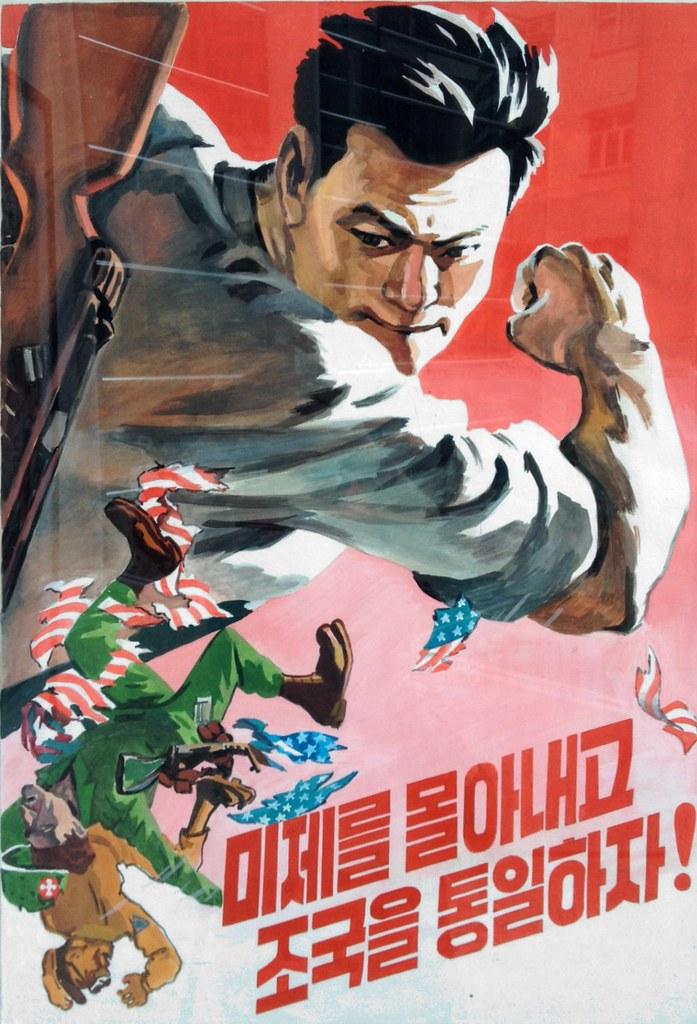
Development of nuclear weapons has enabled North Korea to avoid the fate of Libya, Syria and Iraq
Over the last 75 years, North Korea has been invaded and bombed back to the stone age by the United States, subjected to unprecedented economic warfare, vilified in the international media and had its population targeted in a massive psychological warfare campaign.
U.S. leaders have predicted its imminent demise many times, believing that the country is run by a depraved family dynasty that keeps its population in slavery.
Against insatiable odds, North Korea, however, has survived, with U.S. leaders getting it wrong.
The Kim dynasty isn’t reviled by its own people but genuinely respected by many of them because it has helped them to weather savage attacks by a brutal foreign empire over generations.
A key to the Kim’s survival has been the development of a nuclear weapons arsenal that has spared North Korea the fate of Libya, Iraq and Syria.
Another key is North Korea’s close relationship with China and now Russia, and the Kim family’s adherence to the Juche philosophy, which promotes self-reliance and support for industrial development.

Surviving the Unipolar Era
A.B. Abrams is the pen name of a former U.S. intelligence analyst who worked in North Korea and who has published important recent books on atrocity fabrication, the Syrian conflict, North Korea, and on U.S. imperialism in Southeast Asia.
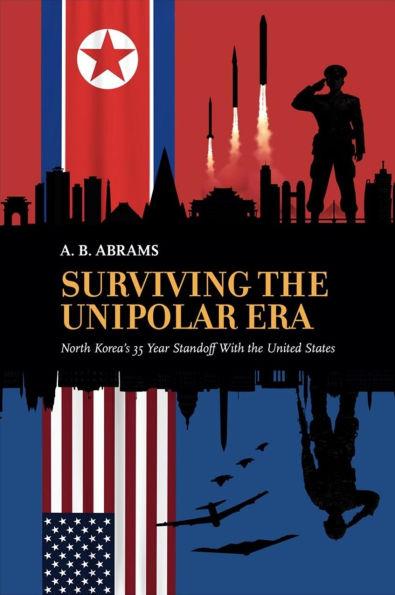
Abrams’ latest book, Surviving the Unipolar Era: North Korea’s 35 Year Standoff with the United States (Atlanta: Clarity Press, 2024) tells the remarkable story of North Korea’s survival in the midst of a barbaric 75-year regime change operation by the United States.
The three-quarter-century-long regime change operation commenced at the end of World War II when Kim Il Sung consolidated power in North Korea and adopted a socialist model of governance.
Kim had wide popular backing as a nationalist hero who had fought the Japanese in Manchuria. Japan had colonized Korea beginning in 1905 as part of an attempt to forge a pacific empire to counter Western imperialism.
In an attempt to prevent Korea’s reunification under a socialist leader after World War II, the Truman administration artificially divided the country[1] and financed the military and police apparatus of Syngman Rhee, a conservative nationalist who massacred over 100,000 dissidents prior to the official outbreak of the Korean War in 1950.

Abrams discusses the horrific atrocities committed by the U.S. invading forces during the Korea War, which have been characterized as genocide by leading members of the South Korean government’s Truth and Reconciliation Commission.
The atrocities included a massive bombing campaign and massacres that were erroneously blamed on the North Koreans. U.S. troops carried out mass rape, with some military commanders organizing patrols in villages for the sole purpose of raping Korean women.[2]
According to Abrams, a notable indicator of how the Korean War was fought was that the war crimes committed by U.S. and allied forces were used by the defense of Nazi German war criminals to argue, on the basis that their atrocities were no worse than those committed more recently by the U.S. in Korea, that they should have their sentences commuted.[3]

In the decades that followed the Korean War armistice, Abrams details the expansion of a vast comfort women system for American military personnel in Korea, fueled by trafficking and rapes on a massive scale including of minors, and a prevailing debt slavery system, which provided further fuel for the North Korean leadership’s drive to keep their population outside Western control.[4]
The Kim family cemented its legitimacy in the postwar era by overseeing the remarkable reconstruction of North Korean cities and furthering North Korea’s industrialization.
Foreign observers noted the high levels of technical education among the North Korean workforce even in rural areas, with domestic industrial works such as hydroelectric dams considered to be nothing less than “engineering masterpieces.”[5]
The North Korean economy was far advanced of the South’s through the 1960s, until the Vietnam War resulted in an artificial boom there. The North Korean economy furthermore suffered tremendously from the collapse of the Soviet Union, whose terrible consequence was exacerbated by flooding and other natural disasters in the 1990s.
The Clinton administration sought to take advantage of the situation by denying relief aid while expanding extremely harsh economic sanctions through the UN Security Council, whose intent was to block all shipping into and out of the country and cut off all oil supplies.[6]
The Clinton administration planned for aerial strikes targeting the Yongbyon facility where North Korea was then developing nuclear weapons as a deterrent.[7]
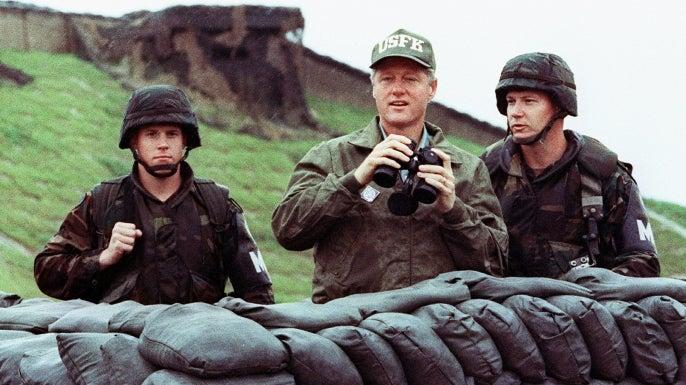
To prevent renewed outbreak of war that would entail staggering losses, the Clinton administration agreed to a framework by which the U.S. would move towards normalization of political and economic relations and make arrangements for the provision of a light water reactor project and oil deliveries to assist North Korea’s energy needs.
In exchange, North Korea agreed to freeze work at Yongbyon and allow for International Atomic Energy Agency (IAEA) inspections.[8]
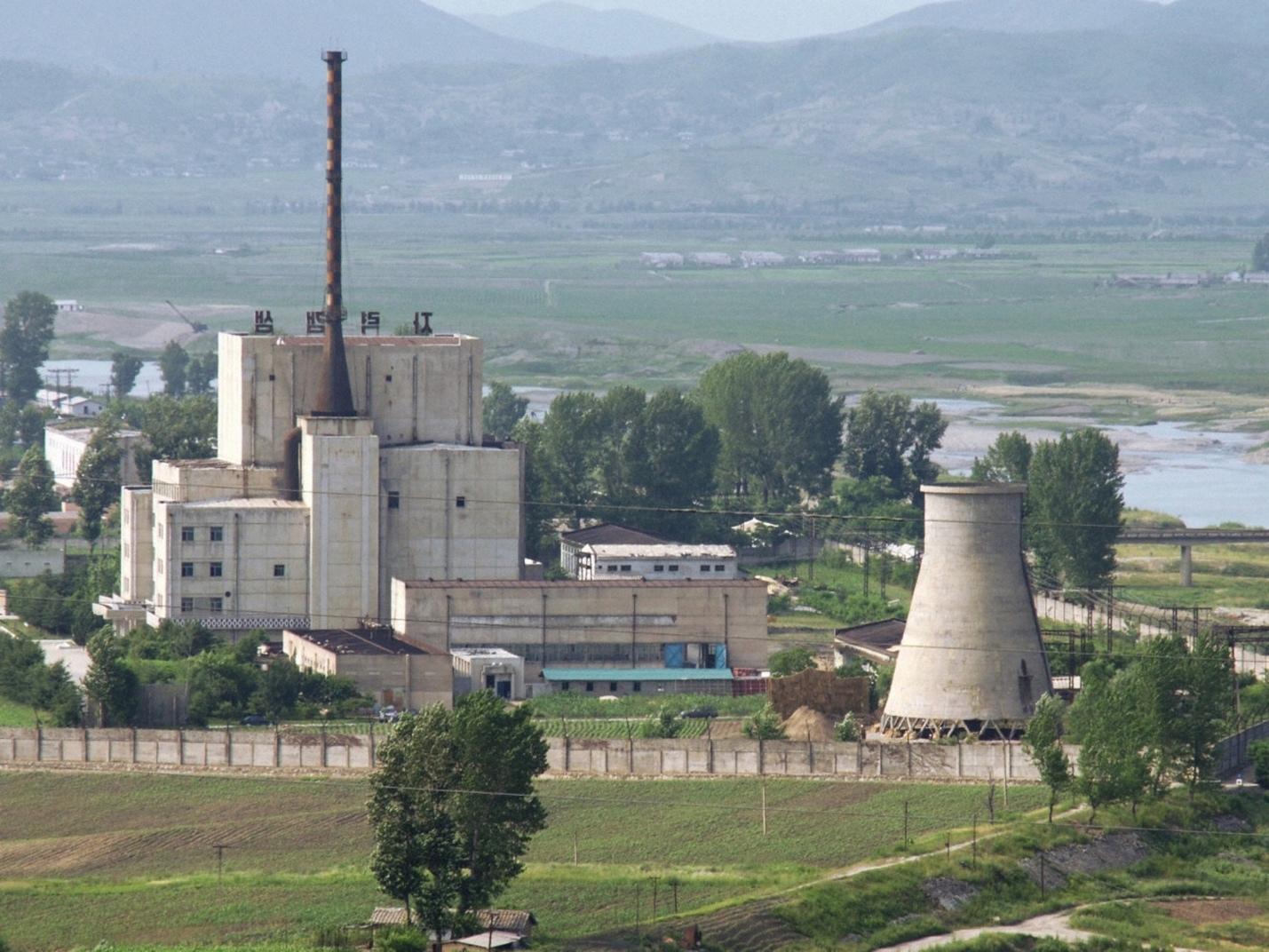
Abrams suggests that the Clinton administration signed the agreed framework only because it felt that North Korea was on the verge of collapse and had no intention of abiding by it. The light water project never got off the ground and oil deliveries were never made.[9]
Pushing North Korea Past the Point of No Return
The failure of U.S. economic warfare to facilitate regime collapse led to more aggressive approaches in the Bush and Obama eras, which pushed North Korea past the point of no return in its resolve to develop nuclear weapons.
Pulling out of Clinton’s agreed framework, a year into office on January 29, 2002, President Bush in his state-of-the union address labeled North Korea as a member of the Axis of Evil alongside Iran and Iraq.[10]
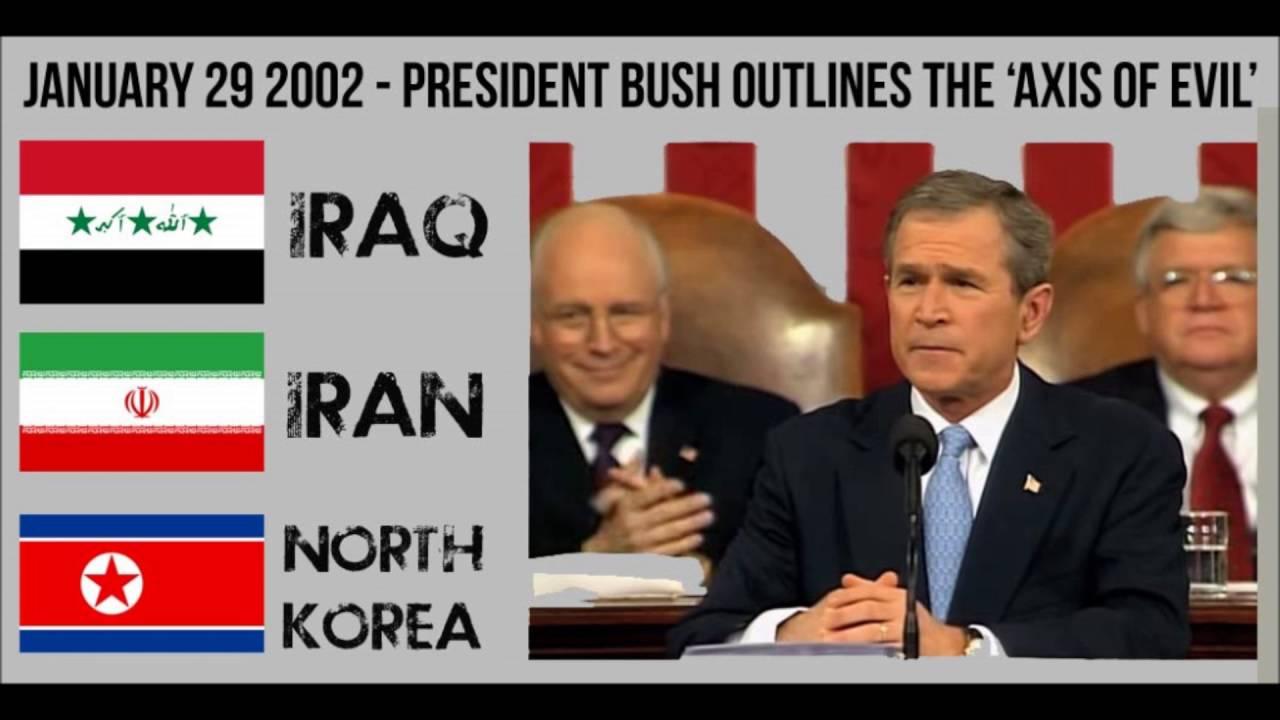
Under Secretary for Arms Control and International Security Affairs John Bolton reportedly handed Bush a copy of the book The End of North Korea by Nicholas Eberstadt and said “that’s our policy.”[11]
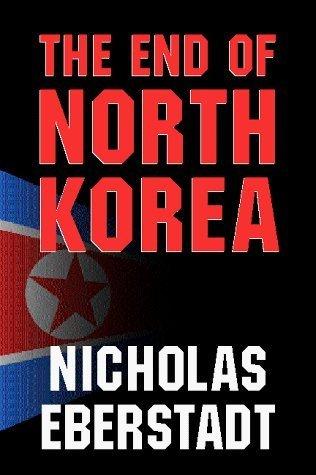
An intelligence official who had attended White House meetings recalled that “Bush and Cheney want [Kim Jong-Il’s] head on a platter—they have a plan and they are going to get this guy after Iraq.”[12]
Iraq, of course, turned into a quagmire but Bush and Cheney also underestimated the Korean People’s Army (KPA’s) conventional military capabilities and breadth of North Korea’s underground munitions factories that made the country impossible to conquer.
Ashton Carter, who served as Defense Secretary during Obama’s second term, called North Korea, a “tough nut to crack,” stating that “North Koreans believe in socialism. But they believe even more in being proud Koreans…children in North Korea have several hours of political education a day. Their parents did and their grandparents did.”[13]

The Obama administration intensified Bush’s regime change efforts through a) an escalation of economic warfare and cyber warfare attacks, b) expansion of subversive radio broadcasts into North Korea, c) expanded military exercises with South Korea that were designed to send a threatening message, and e) a large-scale media vilification campaign that included promotion of fabricated stories by defectors and sponsorship of a Hollywood film about a plot to assassinate North Korea’s leader Kim Jong-Un.[14]
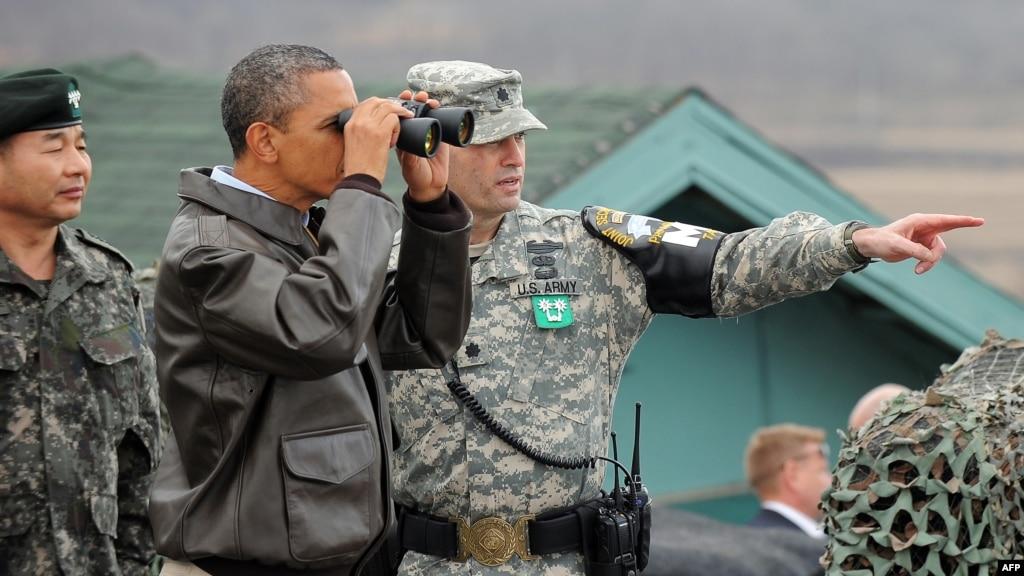
Western journalists assisted in the vilification campaign by spreading outlandish stories that defied credibility. Kim Jong-Un was falsely accused, for example, of feeding his uncle to dogs.[15]
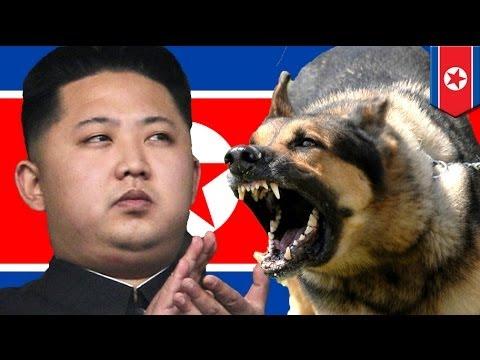
Despite the harsh sanctions, Kim Jong-Un oversaw a rejuvenation of North Korea’s economy with a new emphasis on high tech industries along with investment in innovative projects for agriculture such as fish farming and floating rice fields.[16]
Abrams emphasizes that the Obama administration’s predictions of North Korean collapse was based on a prejudicial view of North Korea far removed from reality.
The fantasy of regime change was rooted in a colonial mentality that presupposed the U.S. capability of leading a supposedly backward Asian nation into enlightenment by importing U.S. style democracy.
Absent among those who embraced this vision was any consideration of the political-economic interests underlying U.S. intervention in Southeast Asia going back to the 19th century.
Nor any understanding that North Korea had been targeted for regime change precisely because its government had forged an independent industrialized economy and refused to allow for U.S. military bases on its territory that could provide a launching pad for attack on communist China.
Game Over
North Korea bolstered its defensive capabilities in the 2010s by testing ballistic missiles on an unprecedented scale and advancing its nuclear weapon program at Yongbyon.[17] As a sign of its military strength, it has become emboldened to revive the Cold War practice of sending troops to support countries fighting against U.S. imperialism, like Syria and allegedly Russia.[18]
In 2018, Foreign Policy published an article titled “The Game is Over and North Korea Has Won.” It observed: “North Korea has a large stockpile of compact nuclear weapons that can arm the country’s missiles, including its new intercontinental ballistic missiles capable of hitting the United States. That’s another way of saying game over.”[19]
North Korea is even stronger today, having unveiled even more advanced ICBM missiles such as the Hwasong-17 and 18, a tactical nuclear warhead, Hwasai-31, and developed effective air defense and satellite surveillance capability.[20]
North Korea’s defense sector has further demonstrated major advances in the production of modern conventional equipment, including cruise missiles and underwater drones.[21]
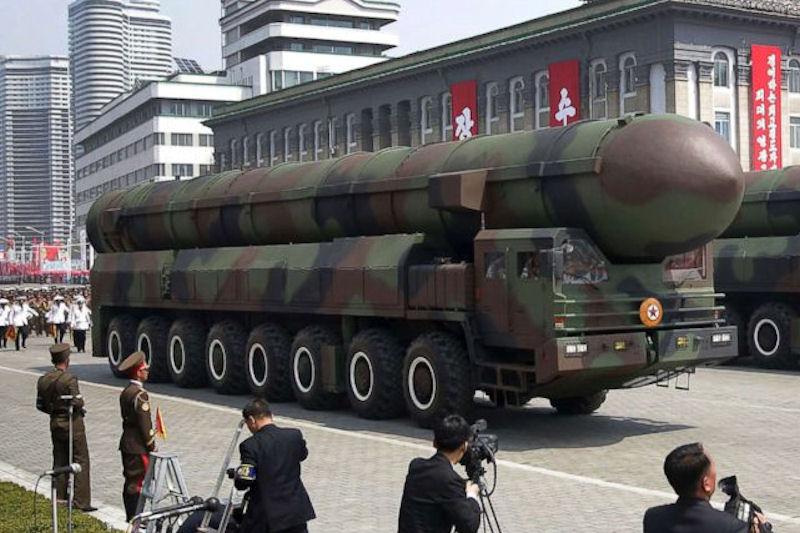
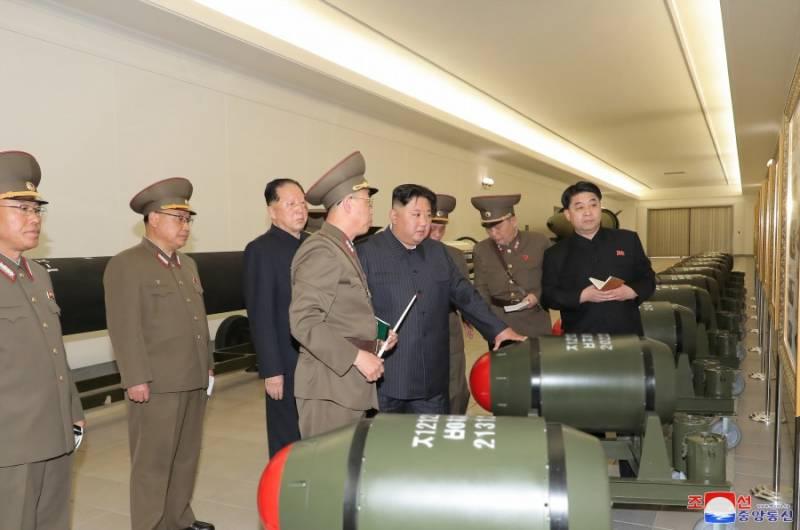
North Korea’s economy has meanwhile benefitted significantly from expanded trade with China and Russia, which has enabled it to increasingly offset the effects of U.S. sanctions.[22]
Abrams’ book ultimately makes clear that David (North Korea) has defeated Goliath (the USA)—after withstanding biblical scale devastation.
Whereas the Jews wandered in the desert for forty years before entering their promised land, North Koreans had to endure 75 years of pure hell, though have also come out stronger on the other end.

Abrams emphasizes that the division was designed so that most of the arable land was in South Korea. Only 17 percent of land in the North was arable and soil quality remained poor there. As a result, according to CIA assessments, it took until 1970 for North Korea to gain full food self-sufficiency. A.B. Abrams, Surviving the Unipolar Era: North Korea’s 35 Year Standoff With the United States (Atlanta: Clarity Press, 2024), 90. ↑
Abrams, Surviving the Unipolar Era, 28, 32. ↑
Abrams, Surviving the Unipolar Era, 33. ↑
Abrams, Surviving the Unipolar Era, 33. South Korean police that were trained by U.S. advisers were “actively involved in trafficking in women and smuggling them to brothels,” according to Abrams. He estimates that around one million South Korean women worked in the comfort women system from 1950 to 1971. ↑
Abrams, Surviving the Unipolar Era, 66. ↑
Abrams, Surviving the Unipolar Era, 79, 92. ↑
Abrams, Surviving the Unipolar Era, 80. ↑
Abrams, Surviving the Unipolar Era, 84. ↑
Abrams, Surviving the Unipolar Era, 86. ↑
Abrams, Surviving the Unipolar Era, 115, 116. ↑
Abrams, Surviving the Unipolar Era, 117. ↑
Abrams, Surviving the Unipolar Era, 137. ↑
Abrams, Surviving the Unipolar Era, 123. ↑
Abrams, Surviving the Unipolar Era, 205, 207, 208, 209, 210, 214. Some of the outlandish claims made by defectors were that Kim Jun-Un kept sex slaves and that AIDS patients in North Korea were executed or experimented on with chemical weapons. The film, The Interview, which promoted racist caricatures, was produced by Seth Rogen, who said publicly he was convinced that consultants to the film were “in the CIA.” ↑
Abrams, Surviving the Unipolar Era, 211. ↑
Abrams, Surviving the Unipolar Era, 165. ↑
Abrams, Surviving the Unipolar Era, 176. ↑
During the 1960s and 1970s, North Korean pilots served courageously in the Vietnam War. ↑
Abrams, Surviving the Unipolar Era, 285. ↑
Abrams, Surviving the Unipolar Era, 387. ↑
Abrams, Surviving the Unipolar Era, ch. 6. ↑
Abrams, Surviving the Unipolar Era, ch. 7. ↑
CovertAction Magazine is made possible by subscriptions, orders and donations from readers like you.
Blow the Whistle on U.S. Imperialism
Click the whistle and donate
When you donate to CovertAction Magazine, you are supporting investigative journalism. Your contributions go directly to supporting the development, production, editing, and dissemination of the Magazine.
CovertAction Magazine does not receive corporate or government sponsorship. Yet, we hold a steadfast commitment to providing compensation for writers, editorial and technical support. Your support helps facilitate this compensation as well as increase the caliber of this work.
Please make a donation by clicking on the donate logo above and enter the amount and your credit or debit card information.
CovertAction Institute, Inc. (CAI) is a 501(c)(3) non-profit organization and your gift is tax-deductible for federal income purposes. CAI’s tax-exempt ID number is 87-2461683.
We sincerely thank you for your support.
Disclaimer: The contents of this article are the sole responsibility of the author(s). CovertAction Institute, Inc. (CAI), including its Board of Directors (BD), Editorial Board (EB), Advisory Board (AB), staff, volunteers and its projects (including CovertAction Magazine) are not responsible for any inaccurate or incorrect statement in this article. This article also does not necessarily represent the views the BD, the EB, the AB, staff, volunteers, or any members of its projects.
Differing viewpoints: CAM publishes articles with differing viewpoints in an effort to nurture vibrant debate and thoughtful critical analysis. Feel free to comment on the articles in the comment section and/or send your letters to the Editors, which we will publish in the Letters column.
Copyrighted Material: This web site may contain copyrighted material the use of which has not always been specifically authorized by the copyright owner. As a not-for-profit charitable organization incorporated in the State of New York, we are making such material available in an effort to advance the understanding of humanity’s problems and hopefully to help find solutions for those problems. We believe this constitutes a ‘fair use’ of any such copyrighted material as provided for in section 107 of the US Copyright Law. You can read more about ‘fair use’ and US Copyright Law at the Legal Information Institute of Cornell Law School.
Republishing: CovertAction Magazine (CAM) grants permission to cross-post CAM articles on not-for-profit community internet sites as long as the source is acknowledged together with a hyperlink to the original CovertAction Magazine article. Also, kindly let us know at info@CovertActionMagazine.com. For publication of CAM articles in print or other forms including commercial internet sites, contact: info@CovertActionMagazine.com.
By using this site, you agree to these terms above.
About the Author

Jeremy Kuzmarov holds a Ph.D. in American history from Brandeis University and has taught at numerous colleges across the United States. He is regularly sought out as an expert on U.S. history and politics for radio and TV programs and co-hosts a radio show on New York Public Radio and on Progressive Radio News Network called “Uncontrolled Opposition.”
He is Managing Editor of CovertAction Magazine and is the author of six books on U.S. foreign policy, including Obama’s Unending Wars (Clarity Press, 2019), The Russians Are Coming, Again, with John Marciano (Monthly Review Press, 2018), Warmonger. How Clinton’s Malign Foreign Policy Launched the U.S. Trajectory From Bush II to Biden (Clarity Press, 2023); and with Dan Kovalik, Syria: Anatomy of Regime Change (Baraka Books, 2025).
Besides these books, Kuzmarov has published hundreds of articles and contributed to numerous edited volumes, including one in the prestigious Oxford History of Counterinsurgency .
He can be reached at jkuzmarov2@gmail.com and found on substack here.


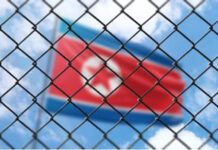
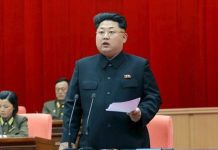


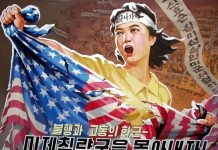




Here is some information about prisoners in North Korea.
https://www.opendoorscanada.org/prisoners-in-north-korea/
“Development of nuclear weapons has enabled North Korea to avoid the fate of Libya, Syria and Iraq…”
Has it? I am not so sure. This is certainly not an argument that I would use. It is impossible to prove.
The main reason for invading a country is because it has a strategic importance which usually involves assets such as oil. That was certainly the case with Iraq and Libya.
North Korea, by contrast, does not have any reserves of oil that I am aware of.
“Iraq, of course, turned into a quagmire but Bush and Cheney also underestimated the Korean People’s Army (KPA’s) conventional military capabilities and breadth of North Korea’s underground munitions factories that made the country impossible to conquer.”
No, I think what happened here is that Bush and Cheney recognised these factors and decided that there was little to gain from attacking North Korea. The final part of that statement would appear to contradict the idea that North Korea avoided being attacked because it had nuclear weapons.
I very much hope for a formal end to the Korean War and the elimination of nuclear weapons.
You are teaching your students (the readers) about North Korea. But you do not seem to be interested in receiving any feedback from your students and finding out what your students think. I guess since you are telling the Truth it is sufficient for everyone to listen to the Truth